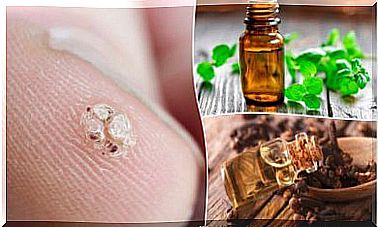Tanorexia: Bronze Addiction And Its Dangers

Tanorexia, meaning addiction to bronze, is a compulsive desire to tan or stay tanned. This was considered to be just eccentric behavior for a long time and, until recently, was not classified as an addiction or disorder. But a 2005 study by a group of dermatologists changed the way people look at the subject.
Nowadays, specialists approach tanorexia just like any other addiction, because it meets all the relevant criteria. The 2005 study mentioned above suggests that people who exhibit this behavior tend to have other patterns of behavior specific to addictions, such as alcoholism.
Subsequent studies continued the same path, identifying possible causes of tanorexia. In today’s article, we will talk about them. Bronze addiction is not, as originally thought, a simple fashion trend or an aesthetic obsession. Unfortunately, the problem is much deeper.
What is bronze addiction?
Tanorexia can be defined as a bronze addiction. Those affected experience an obsessive need to have a darker complexion. For this purpose, they sit in the sun outdoors or spend a lot of time at the solarium. But they are never satisfied with the complexion of their skin.
Some experts consider tanorexia to be an independent mental disorder, while others see it as a kind of dysmorphic disorder of the body. In addition, some people point out that tanorexia should be labeled as a syndrome because some of its components are not sufficiently supported by scientific evidence.
Individuals suffering from tanorexia do not take into account the consequences of exposure to the sun or ultraviolet rays. They have an obsessive need to close their skin, and the health risks do not seem convincing.

Symptoms and causes
According to a study published in the Journal of the American Academy of Dermatology in 2004, constant sun exposure and repeated exposure to ultraviolet rays increase the level of relaxation. These factors cause the release of endorphins and opioids in the body.
Endorphins are chemicals that relieve pain and provide well-being. The human body secretes them naturally in the hypothalamus and pituitary gland. But this process only takes place in moments of emotional or physical stress. This category includes situations when we experience pain or exertion, when we are excited and when we have an orgasm.
This feeling of well-being can lead to addiction. A person with tanorexia will experience withdrawal syndrome when they cannot tan. Unlike people who like to sit in the sun from time to time, tanorexics will have the following symptoms:
- A compulsive desire to tan and frustration when their skin is not golden enough
- The impression that their skin is lighter than it really is
- Anxiety when it seems to them that their current tan is starting to go away
- Premature aging of the skin
- Burns she tries to cover with makeup

The consequences of tanorexia
Moderate sun exposure has beneficial effects in treating depression and facilitates the metabolism of vitamin D. But excess sunlight can cause more health problems.
First of all, the skin will suffer. Excessive sun exposure accelerates the aging of this organ and dehydrates it. Burns or various types of cancer can also occur. At the same time, tanorexia adversely affects the eyes, increases the risk of immune disorders, damages DNA and supports the formation of free radicals, among others.
From a mental point of view, bronze addiction produces a feeling of insecurity and lack of autonomy. It aggravates anxiety, reduces tolerance for frustration and often has a detrimental impact on relationships.
How is bronze addiction treated?
Generally, people with tanorexia do not accept that they have a problem. They can frequently consult medical staff because of sunburn and other consequences of this disorder. But they will refuse to admit that the symptoms are caused by excessive tanning.
In fact, tanorexia is very similar to anorexia. Anorexic patients look in the mirror and feel that they are fat, even if they are just skin and bone. In the case of tanorexia, the patient thinks that he is pale, although in reality his skin is tanned or even burnt.
Individuals with tanorexia should consult a psychologist in order to identify the factors that trigger this behavior. Most likely, there are problems with self-acceptance, but these can be treated with the help of a specialist.









